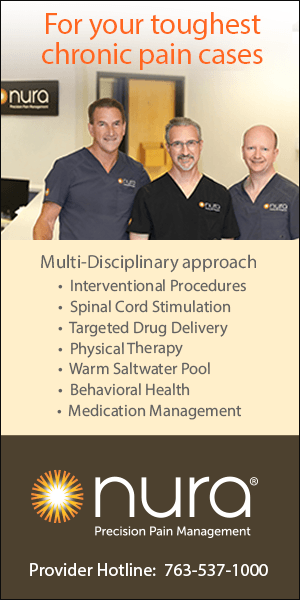growing number of older adults choose to use assisted living for their care. Yet there are few if any evidence-based tools available for comparison across providers. This article provides an overview of a recently developed tool, the Assisted Living (AL) Report Card, why it was developed and how it is being used.
Quality Improvement
The Assisted Living Report Card
An important new decision-making tool
BY Tetyana P. Shippee, PhD, Kelly Moeller, MPH, Tricia Skarphol, MA, Rachel Shands, MSW and Lauren Glass, MSW, LGSW
State Priority
The Minnesota Department of Human Services (DHS) and the Minnesota Board on Aging (MBA) have worked for many years to develop resources and tools to help people make decisions about the services they receive. In 2006, DHS collaborated with the Minnesota Department of Health (MDH) and the University of Minnesota to introduce the Minnesota Nursing Home Report Card. The report card was a response to state legislative actions calling for greater transparency about nursing home quality. It rates facilities on comprehensive information including survey responses from long-stay residents, short-stay residents and families: clinical assessment outcomes; MDH licensing survey and investigation findings; facility staffing data; and the cost of care. People using the site can search in their preferred area and compare to facilities based on which quality topics matter most to them. Since its implementation, Minnesota’s Nursing Home Report Card has become recognized nationwide by quality rating organizations and other states as a model for providing information on quality to consumers of long-term care.
In 2019, Gov. Tim Walz and the Minnesota Legislature authorized funding and development of a new Assisted Living (AL) Report Card, as part of a broader package of reforms to create an assisted living licensure system and improve quality in assisted living settings. Modeled after the long-standing and successful Nursing Home Report Card and adapted for assisted living, the AL report card was launched to the public in January 2024. The report card currently includes a set of measures based on resident quality of life and family satisfaction survey responses. The report card will be expanded in 2025 to include additional measures based on MDH’s licensing survey findings regarding health, safety and staffing. This report card serves as a vital tool for consumers and their families when making decisions about moving into an assisted living facility.
An important new decision-making tool
Report Card Measure Development
The development of the AL report card occurred in two phases, beginning in the spring of 2019. Phase one included a national literature review and expert interviews by the University of Minnesota team, led by Dr. Tetyana Shippee, to identify existing assisted living quality indicators. This process led to the identification of nine domains of quality.
The second phase focused on gathering feedback from stakeholders in Minnesota to refine the identified domains and their measures, which were derived from national work. Through statewide surveys, public presentations and focus groups with residents, Minnesota stakeholders helped finalize the domains of highest interest to them. Outreach efforts included a statewide online survey with 822 respondents; 13 public presentations, including a variety of provider groups; a statewide livestream event with 266 attendees; and five focus groups (four with assisted living residents and one with consumer advocacy organizations). The highest rated domains across all stakeholders were: 1) quality of life; 2) staff quality; and 3) resident safety. The overall goal of this phase was to develop a quality framework for the AL report card that was informed by Minnesota stakeholder feedback.
Resident & Family QOL Description
To measure the domain of most importance to all stakeholders, the team developed resident quality of life, resident and family surveys. These surveys cover various domains such as staff relationships, privacy of the environment, resident autonomy and overall satisfaction. In 2022-2023, these surveys were administered to residents and their family members from AL facilities that have a capacity to serve 20 or more residents. Starting in 2024, these surveys will be administered at facilities that serve five or more residents. Resident surveys involve in-person interviews with a random sample of residents in each eligible facility, and family surveys are collected via mailed questionnaire, phone, or online.
Scoring Resident and Family Surveys
Resident and family surveys are scored on a five-star scale, with one star representing the lowest possible rating and five stars representing the highest. Domain scores are calculated as an average of all reportable scores for each individual domain. Facility average scores for the Resident Quality of Life survey and the Family Satisfaction survey are calculated by combining the totals from each of the nine and eight domains respectively and reporting them as the average for the entire facility. These scores are then risk adjusted. Risk adjustment helps make comparisons among facilities more fair by accounting for facility characteristics that are out of a facility’s control but still affect a facility’s score. Facility scores are risk adjusted based on where the facility is located (the seven-county Twin Cities area or Greater Minnesota). Among other factors, facility location can be a proxy for workforce availability, which differs between metro and rural areas.
The questions asked in the Resident Quality of Life survey fall under the following nine domains:
Staff: Whether residents feel treated with respect by staff, timeliness of help, etc.
Environment: Questions surrounding noise level, space to socialize, etc.
Food: Food choices, including healthy food, satisfaction with food served, etc.
Engagement: Questions around facility activities, how residents spend their time, etc.
Autonomy: Includes questions about the ability to personalize one’s space, their involvement in decisions, etc.
Culture: Questions about religion, spirituality, as well as broader cultural understanding.
Security: Questions around feelings of safety and privacy, etc.
Finances: Includes resident involvement with finances in facility, understanding of fees and perceived value for the money.
Overall: Grading the facility A-F where A is the best and F is the worst.
The domains covered by the questions in the Family Satisfaction survey include:
Experience: Whether the family member feels welcome when they visit, whether they are comfortable voicing concerns, etc.
Choice: Whether they have opportunities to provide input in their resident’s care, etc.
Needs: Questions surrounding whether their resident is given opportunities to be independent, whether the family member receives timely updates, etc.
Finances: Family involvement with resident’s finances, understanding of fees, and identifying if fees are appropriate for the quality of services provided.
Housekeeping: Whether the resident’s living space and overall facility are maintained and clean.
Meals: Questions around food variety and if their resident enjoys mealtime/food.
Environment: Includes questions about whether the environment is safe.
Staff: Whether staff know and treat resident with respect, staff knowledge of the care plan, whether management responds to concerns, etc.
Overall:
Grading facility on A-F scale, whether family feels confident with resident care and the likelihood of recommending this facility to another family.
The AL report card was launched to the public in January 2024.
Additional Quality Domains
The AL Report Card provides scores on other quality domains of importance to Minnesota stakeholders, specifically around staffing, safety and resident health. The data to support these quality scores come from the Minnesota Department of Health’s (MDH) assisted living licensing surveys, which are conducted on-site at facilities. The research team at the University of Minnesota put these three quality measures into use based on input from DHS, MDH and provider and advocacy groups.
When an MDH surveyor identifies a provider is out of compliance with a licensing requirement, MDH issues a correction order to the provider. Correction orders are assigned a scope and severity level that categorizes the seriousness of the provider’s noncompliance with the requirement. The scope of noncompliance refers to how widespread the problem is, whether it can be isolated and its pattern. The severity level of the noncompliance ranges from no actual harm or a potential for minimal harm to a resident to situations of immediate harm to resident health or safety. Licensing requirements listed in the report card’s safety measures include, but are not limited to, reporting maltreatment and/or grievances, emergency preparedness, background check, infection management and other policies concerning safety. Major areas the report card captures in its resident health measure are medication management, treatment/therapy management, resident assessments and resident service plan. The staffing measure includes requirements on staffing training and licensure, staff availability and supervision of staff members. These ratings will be posted in 2025 and use a five-star rating system for each quality domain.
Using the Report Card
The Assisted Living Report Card is a work in progress. It currently displays resident quality of life and family satisfaction ratings for about 450 of the state’s 2200 assisted living facilities. Report card users can search for quality ratings by zip code, county or facility name and can sort search results by city, license type and priority measure. Users can also look up state average quality scores and ratings, search for assisted living ratings by map view, observe an assisted living’s resident quality of life and family satisfaction domain scores and ratings history and print or e-mail search results. In late 2024 and early 2025, the state plans to add more ratings based on 2024 resident quality of life and family satisfaction surveys and on MDH’s licensing survey and investigation finding. New report card ratings will be added quarterly. Forthcoming website enhancements include the ability to link directly to an assisted living’s MDH licensing survey and investigation reports and sort search results by facility size.
The AL Report Card is a useful tool to help consumers compare assisted living facilities by quality. The report card provides quality ratings for individual facilities based on statewide data sources. Consumers should use the report card along with other sources of information to help them make decisions about assisted living. MNHelp.info is a resource that provides useful additional information about assisted living that consumers may find useful, such as services offered and populations served by an assisted living facility. DHS plans to provide links between the two websites in future updates.
Conclusion
The AL Report Card represents a significant step toward promoting transparency and accountability within the assisted living industry. By providing accessible and comprehensive information on quality indicators, it empowers consumers and stakeholders to make informed decisions and drive positive changes in the quality of care provided in assisted living facilities.
The AL Report Card serves multiple purposes for different stakeholders. For consumers and their families, it provides valuable information to guide their selection of an assisted living facility based on their preferences related to quality ratings. Facilities can use the report card as a tool for quality improvement efforts, identifying areas for enhancement and benchmarking their performance against others. Physicians can also leverage the report card to make informed recommendations to their patients regarding suitable assisted living options.
Learn More
More information surrounding the timeline of the development of the report card can be found on the Assisted Living Report Card webpage. This can be found by searching assisting living report card on the DHS website http://mn.gov/dhs/.
Tetyana Shippee PhD, is a professor in the Division of Health Policy & Management, School of Public Health at the University of Minnesota.
Kelly Moeller, MPH, is a Health Services, Research, Policy & Administration PhD student in the Division of Health Policy & Management, School of Public Health at the University of Minnesota.
Tricia Skarphol, MA, is a research project manager in the Division of Health Policy & Management, School of Public Health at the University of Minnesota.
Rachel Shands, MSW, is the deputy director of the Aging and Adult Services Division (AASD) at the Minnesota Department of Human Services.
Lauren Glass, MSW, LGSW, is a quality improvement consultant in Aging and Adult Services at the Minnesota Department of Human Services.
MORE STORIES IN THIS ISSUE
cover story one
AI-Powered Olfactory Sensor Technology: The electronic nose in medicine
By Chris Campbell, CEO
cover story two
Colorectal Cancer: An alarming increase among younger adults



















